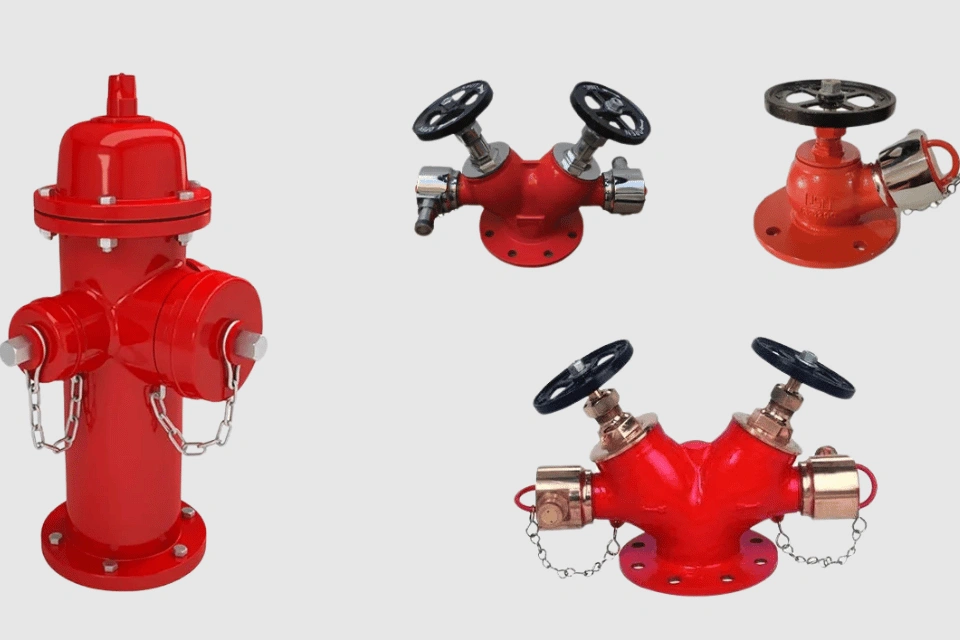Why a Fire Hydrant System is Crucial for Properties in Delhi NCR & India
Why a Fire Hydrant System is Crucial for Properties in Delhi NCR & India
Delhi, the NCR (including areas like Gurgaon, Noida, Faridabad, and Ghaziabad), and various regions across India face diverse fire safety challenges due to varying infrastructure and building types. A well-designed and installed Fire Hydrant System offers numerous critical benefits:
- Reliable Water Source – Provides firefighters with a readily accessible and high-volume water supply to combat fires effectively, regardless of location in Delhi NCR or India.
- Enhanced Firefighting Efficiency – Allows for quicker and more efficient suppression of fires, minimizing damage and potential loss of life across Delhi NCR and India.
- Regulatory Compliance – Many buildings and industries in Delhi NCR and across India are mandated by local fire safety regulations to have a functional fire hydrant system.
- Increased Safety – Creates a safer environment for occupants, employees, and visitors in any property throughout Delhi NCR and India.
- Property Protection – Helps to contain and extinguish fires before they cause extensive damage to your valuable assets, whether in Delhi, its surrounding NCR, or other parts of India.
Zedex Fire : Your End-to-End Fire Hydrant System Solution Across Delhi NCR & India
Zedex Fire : Your End-to-End Fire Hydrant System Solution Across Delhi NCR & India
As a leading player in the fire safety industry in Delhi NCR and India, Zedex Fire offers a complete range of services for your Fire Hydrant System requirements :
- Manufacturing – We manufacture a wide array of high-quality hydrant components, ensuring durability and performance suitable for diverse Indian climates and conditions.
- Supply – We supply a comprehensive range of fire hydrant system components, from hydrants and valves to pipes and pumps, across Delhi NCR and the entire nation.
- Dealership – As authorized dealers, we offer access to top-of-the-line fire safety equipment available throughout India.
- Installation – Our team of experienced and certified technicians provides professional and efficient installation services, adhering to all relevant safety standards and local regulations in Delhi, the NCR, and all over India.
Our Range of Fire Hydrant Systems and Components for Delhi NCR & India
Our Range of Fire Hydrant Systems and Components for Delhi NCR & India
At Zedex Fire, we offer a variety of Fire Hydrant Systems and components to suit diverse applications across Delhi NCR and India :
- Wet Barrel Fire Hydrants – Ideal for areas in India, including parts of the NCR, where freezing temperatures are not a primary concern, offering immediate water access.
- Dry Barrel Fire Hydrants – Perfect for specific applications in colder regions of India or where preventing freezing is crucial.
- Standpipe Systems – Essential for multi-story buildings in Delhi NCR and across India, providing water access on every floor.
- Underground and Above Ground Hydrant Systems – Customized solutions based on site requirements and aesthetics throughout Delhi NCR and India's varied landscapes.
- Automatic Fire Hydrant Systems - Advanced systems for rapid fire detection and suppression, suitable for various properties in Delhi NCR and India.
- Key Components - We supply all necessary components nationwide, including :
- * Fire Fighting Pumps
- * Piping and Fittings
- * Control Valves (Gate Valves, Non-Return Valves, etc.)
- * Hose Reels and Cabinets
- * Fire Department Connections (FDCs)
- * Nozzles and Accessories
- * Pressure Gauges
Our Comprehensive Installation Process Across Delhi NCR & India
Our Comprehensive Installation Process Across Delhi NCR & India
Zedex Fire follows a meticulous and professional installation process for Fire Hydrant Systems in Delhi, the NCR, and throughout India:
- Detailed Site Assessment – Our experts conduct a thorough evaluation of your property, regardless of its location in Delhi NCR or India, to understand your specific fire safety needs and identify optimal hydrant locations.
- Customized System Design – We develop a tailored fire hydrant system design that complies with local fire safety regulations applicable to your region in Delhi NCR or India and your property's layout.
- High Quality Material Procurement – We source and use only the best quality materials and components suitable for the specific climate and conditions of your location in India.
- Expert Installation – Our certified technicians handle the entire installation process, ensuring precision and adherence to relevant safety standards across Delhi NCR and India.
- Rigorous Testing and Commissioning – We conduct thorough testing to ensure the system functions flawlessly and meets all required pressure and flow rates according to national and local standards.
- Training and Handover – We provide comprehensive training to your staff on the operation and basic maintenance of the fire hydrant system, tailored to your location in Delhi NCR or India.
- Ongoing Maintenance and Support – Zedex Fire offers reliable maintenance and support services nationwide to keep your Fire Hydrant System in optimal working condition.
Why Choose Zedex Fire for Your Fire Hydrant System Needs in Delhi NCR & India?
Why Choose Zedex Fire for Your Fire Hydrant System Needs in Delhi NCR & India?
- Extensive Geographical Reach – We provide our services across Delhi, the entire NCR region, and all over India.
- Local Expertise – We have a deep understanding of fire safety regulations and specific requirements in various regions of India.
- Quality Assurance – We are committed to providing high-quality products and services nationwide.
- Comprehensive Solutions – We offer end-to-end services, from manufacturing and supply to installation and maintenance, throughout India.
- Experienced Team – Our team of experts has the knowledge and skills to deliver reliable and effective fire hydrant systems across diverse Indian environments.
- Customer Focus – We prioritize customer satisfaction and work closely with you to meet your specific needs, wherever you are in India.
- Competitive Pricing – We offer cost-effective solutions without compromising on quality, across Delhi NCR and India.
Contact Zedex Fire Today for Your Fire Hydrant System Needs in Delhi NCR & India
Contact Zedex Fire Today for Your Fire Hydrant System Needs in Delhi NCR & India
Don't compromise on fire safety, no matter your location. Protect your property and loved ones with a reliable Fire Hydrant System from Zedex Fire, your trusted partner across Delhi NCR and India. We are committed to ensuring the safety and security of properties across Delhi, the NCR, and India with our superior Fire Hydrant System solutions. Choose Zedex Fire for peace of mind, nationwide.
Get Expert Advice for Your Fire Safety Solution Needs
Contact us today for a consultation and quote for your Fire Hydrant System in Delhi NCR or anywhere in India.


